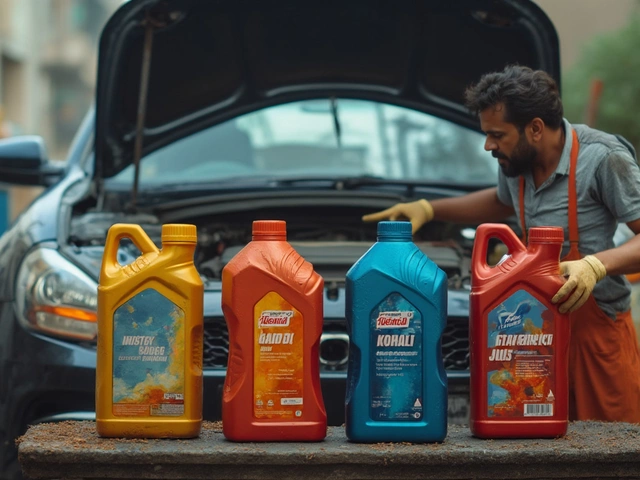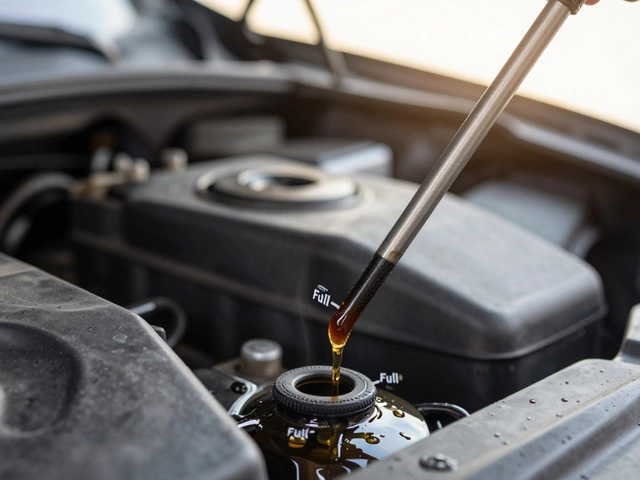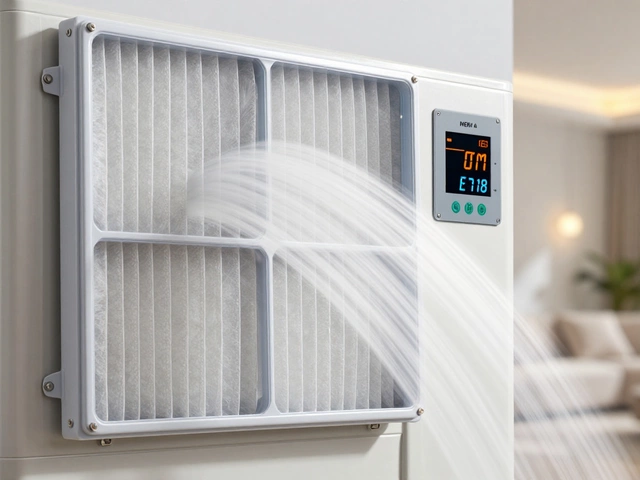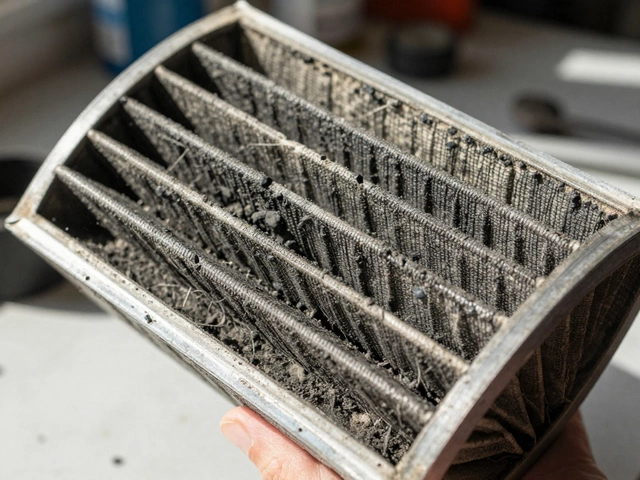
If you've ever found yourself stuck on the side of the road, cursing under your breath at your car, you might have had a run-in with a bad fuel pump. It's a pesky problem but knowing how to tackle it can save you plenty of headaches (and cash). So, how do you spot a bad fuel pump?
Common signs include engine sputters, surging, or losing power during acceleration. If your car just won't start despite a full battery, it might not be your starter; it could be the fuel pump. These are all red flags that it's time to look under the hood. But what's causing the breakdown?
Anything from clogged fuel filters to electrical failures might be at play. Understanding these culprits can help you figure out the best solution. Want to get your hands dirty before calling a pro? Try checking the fuse and relay linked to your fuel system—simple and sometimes forgotten solutions.
- Signs of a Bad Fuel Pump
- Common Causes of Failure
- DIY Troubleshooting Techniques
- Temporary Fixes
- Preventative Maintenance
- When to See a Professional
Signs of a Bad Fuel Pump
Figuring out if you're dealing with a bad fuel pump can seem like a guessing game, but there are clear signs to look for. One of the most obvious red flags is when your car has trouble starting. If you've ruled out the battery, it's worth considering the pump as the culprit.
Another biggie is erratic performance. If the engine sputters, especially when you're accelerating, it's not just annoying—it's a definite clue. When a car surges or loses power spontaneously, it can make even the calmest driver nervous.
Sputtering Engine
Say you're cruising along, foot steady on the gas, and suddenly your engine starts sputtering. That's often a sign your fuel pump can't deliver a steady stream of fuel. If it becomes a regular occurrence, it might be time for a closer inspection.
High-Temperature Stalling
Sweat bullets when your car stalls on a hot day? It's likely not just the summer sun making life difficult. High temperatures can exacerbate fuel pump issues, causing your engine to stall or perform poorly.
Terrible Fuel Efficiency
Noticed you’re filling up more often but not getting anywhere further? A declining fuel pump efficiency can lead to terrible fuel economy. This is an expensive consequence over time, as the car burns more fuel to get the same distance.
Sudden Surges
If your car suddenly surges forward without you pressing the pedal harder, it's probably not a secret superpower. An inconsistent fuel pump might be pushing too much fuel into the engine at unexpected times.
Engine Can't Start
Of course, if your car just won't start at all, and you've checked the battery, you might be looking at a dead pump. It's rare, but not unheard of, for a pump to fail entirely.
| Sign | Indication |
|---|---|
| Sputtering | Irregular fuel flow |
| Stalling | Cuts in fuel delivery |
| Poor Efficiency | Increased fuel usage |
| Surging | Over-delivery of fuel |
| No Start | Possible complete failure |
Common Causes of Failure
All cars eventually face wear and tear, but understanding what can cause a fuel pump to fail might help you prevent a breakdown. Here are the key culprits to watch out for:
Dirty Fuel
Your fuel pump acts as a gatekeeper of the fuel system, so it makes sense that dirty or contaminated fuel can spell trouble. Fuel with dirt or debris can wear down the pump faster, creating blockages. To combat this, make sure you occasionally flush the tank and only refuel at trusted stations.
Clogged Fuel Filter
The fuel filter is there to catch unwelcome particles before they reach the pump, but it can't do its job if it's clogged beyond belief. A clogged filter forces your pump to work overtime, straining itself to get fuel to the engine. Swap out fuel filters regularly to avoid unnecessary stress.
Electrical Issues
Fuel pumps don't function solo—they need electricity to keep them running! Faulty wiring or poor electrical connections might leave your pump without power. Regularly check and maintain your electrical system, especially if you've noticed bizarre behavior from your car's electrical components lately.
Running on Empty
Do you habitually let the fuel gauge hit rock bottom before refueling? This habit might give you more than anxiety; it can harm your fuel pump. Running on low fuel can cause overheating since the pump uses the fuel for cooling. Make sure you maintain at least a quarter-tank to keep everything running smoothly.
Wear and Tear
Let's face it—time isn't kind to any car component, and your fuel pump is no exception. Over time, moving parts will suffer wear, and performance will start lagging. While you can't stop the clock, regular check-ups and maintenance can manage wear and tear more effectively.
Address these issues early, and you'll save both your time and money, avoiding a sudden failure of your car's fuel pump.
DIY Troubleshooting Techniques
Trying to save a buck by getting your hands dirty? You're not alone. First, make sure your car has enough fuel. It sounds basic, but it’s a quick way to rule out a common misunderstanding.
Check the Fuel Pump Fuse
The simplest place to start is the fuel pump fuse. Pop open your vehicle's fuse box and locate the fuel pump fuse. Replace it if it's blown, and try starting your car again.
Listen for the Fuel Pump Sound
Once the electrical parts are checked, turn the ignition to the 'on' position without starting the engine. A working fuel pump makes a low humming sound. No sound? That could mean trouble.
Using a Fuel Pressure Gauge
A handy tool for this job is a fuel pressure gauge. Hook it up to the test port on your fuel rail. Compare your reading to your car's manual. Is it too low? Good chance the pump's not doing its job.
Inspecting the Fuel Filter
If you're feeling handy, check the fuel filter for clogs. A blocked filter can trick you into thinking the issue is the pump while it's stopping fuel from flowing properly.
Temporary Fixes
- Tap the fuel tank lightly with a mallet. Sometimes this helps start a dying pump, though won't be a long-term solution.
- Add a fuel system cleaner. While mainly for maintenance, it can sometimes mitigate minor blockages enough to keep you going uninterrupted.
If these troubleshooting tips don't rev your engine—literally—it's probably time to visit a pro. But hey, at least you ruled out some of the common problems first!

Temporary Fixes
If you're in a bind and need to get your car moving, there are some quick fixes that might help.
Whack the Fuel Tank
This might sound a bit old-school, but giving your fuel tank a firm tap can sometimes jolt the fuel pump into action. It's like a wake-up call for the pump that's been acting up. Use a rubber mallet or just your foot to give it a nudge—just don't go swinging like you're in a baseball game.
Boost Fuel Pressure
If your fuel pump is on its last legs, getting more fuel to the engine might help. Make sure your gas tank is at least a quarter full. You can also try adding a fuel system cleaner to the tank. While it's not a magic fix, it might clear enough gunk to get you back on the road.
- Use a can of high-quality fuel injector cleaner.
- Pour it into the gas tank following the instructions on the bottle.
- Let the engine idle for a few minutes so the cleaner can circulate through the system.
Cool Down the Pump
Sometimes, an overheated fuel pump just needs a break. If the pump shuts down on a hot day, try letting the car sit for a while. Cooling it down might restart the flow of fuel.
Bypass the Problem
In some cases, a failed relay or connection might cause problems. If you're comfortable, try swapping the fuel pump relay with another similar relay from the fuse box, like the AC relay. It's a clever hack that might buy you some time.
Remember, these are just short-term solutions. A bad fuel pump needs proper attention soon enough. Temporary fixes are about getting you safely to your destination, not a permanent cure. Use them wisely and always plan for a visit to a mechanic afterward.
Preventative Maintenance
Keeping your fuel pump in tip-top shape doesn’t have to be a huge hassle. With just a few simple steps, you can keep your car running smoothly and avoid those unexpected breakdowns. Let's dive into a few practical ways to maintain that fuel pump before it becomes a problem.
Regular Fuel Filter Check
One of the simplest steps you can take is to regularly check your fuel filter. A clogged filter is like a nasty cold for your fuel system. It'll work, but not very well. By ensuring your filter is clean, you’re giving your pump a fighting chance to last longer.
Use Quality Fuel
Don’t skimp on fuel quality. It might be tempting to grab the cheapest option at the pump, but quality fuel can make a big difference in how your pump performs. As car guru Rick Williams once said,
"Cheap fuel is like fast food for your car: quick and cheap, but it'll hurt in the long run."
Keep Fuel Tank Above Quarter Full
Additionally, always try to keep your fuel tank at least a quarter full. Doing this helps your pump stay cool since running on fumes can lead to overheating. It’s as simple as developing the habit of refueling before you're near empty.
Regular Maintenance Schedule
Sticking to a regular maintenance schedule isn’t just a good idea; it's crucial. Once in a while, schedule a professional check-up. These check-ups can spot potential issues that you might miss.
| Maintenance Task | Frequency |
|---|---|
| Check Fuel Filter | Every 2 years or 24,000 miles |
| Use Fuel System Cleaner | Every 3 months |
| Professional Inspection | Annually |
These steps can save you money and frustration down the line. So next time you’re hanging out with your car on a lazy Saturday, do it a favor and show your fuel pump a little love. Who knows? It might just go the extra mile for you in return.
When to See a Professional
There are times when your best DIY efforts just won’t cut it, and that might be the moment to call in the experts. If your fuel pump woes persist even after trying a few tricks, or if things seem to be getting worse, professional help could be the way to go.
Repeated Stalling and Sputtering
If your car is stalling and sputtering significantly more frequently, even after changing the fuel filter and checking for obvious issues, an expert evaluation is needed. This kind of problem might point to deeper issues within the fuel system.
Complex Electrical Issues
When electrical components associated with the fuel pump start acting up, it’s usually better to let a professional handle them. Messing with car wiring, especially without proper tools or expertise, can lead to more problems.
Persistent Low Pressure
Low fuel pressure often shows up as sluggish acceleration or a vehicle that struggles to maintain speed. While pressure issues might stem from simple problems, persistent low pressure that's unresolved by obvious fixes like cleaning filters or using additives suggests that the fuel pump might need checking or replacing, and that’s best left to someone with the right experience.
Benefits of Seeking Professional Help
- They’ll have specialized diagnostic equipment that can pinpoint the issue quicker than guesswork.
- A professional can safely replace the pump or other components, reducing the risk of additional damage.
- Many mechanics offer warranties on repairs, providing peace of mind if something goes wrong afterward.
| Reasons to Visit a Mechanic | Percentage of Cases |
|---|---|
| Fuel System Interruption | 40% |
| Electrical Malfunctions | 30% |
| Low Pressure | 20% |
| Unknown Issues | 10% |
So, if you’re ever in doubt, remember it’s not just about fixing the problem; it’s about making sure your car is safe and efficient on the road. Don’t hesitate to hand over those tricky problems to the pros who do this daily!





